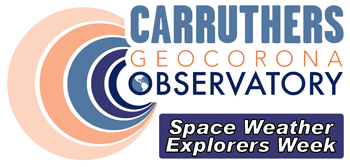Daily motion
We measure the passage of time by counting the cycles of things that repeat. The Sun moves steadily across the sky in a repeating pattern. The Sun rises up from the place where the sky meets the land: the horizon. We call this direction on the horizon the East. The Sun moves up into the sky, reaching a high point, and then dives down toward the opposite direction on the horizon where it sets. We call that direction West. The Sun then reappears some time later back in the East and the cycle repeats. We call each cycle a day. We evenly divide the day into 24 sub-units of time we call hours.
When the Sun is above the horizon, it lights up the whole sky. When it is below the horizon, the sky is dark, a time which we call night. During the night you can see points of light in the sky: planets and stars. The Sun is a star itself. But those other stars are so very far away from us that they appear billions of times dimmer than the Sun. When the Sun is in the sky, we call it daylight or daytime. The stars are still up there, they are just too dim to see through the bright, sunlit sky. The Moon is bright enough to see in the daylight, and so is the planet Venus, if you know right where to look.
The cause of the Sun’s daily motion is the spinning of the Earth. Earth is a big ball of rock, and we live on its lovely surface. The half of the Earth facing the Sun is lit up, and people on that side of Earth experience daytime. The side of Earth facing away from the Sun is in darkness and people there experience night. The Earth always has a day and night side, and as the Earth spins once per day we move in and out of the sunlight. Since we can think of ourselves as stationary, it appears to us that the Sun (and all the space objects) are moving from east to west across the sky. The Earth is spinning eastward, which creates the experience of the cycle of day and night.
Activities
Hands-On
Online
- Stellarium - software for desktops, mobile devices, and web browsers that simulates the sky from anywhere on Earth across thousands of years
- Daily Motion & Moon Phase Simulator - Use the tool to explore how the spinning Earth creates day, night and the motion of the Sun in the sky plus how the orbiting Moon creates the phases of the Moon (from WGBH Boston)


